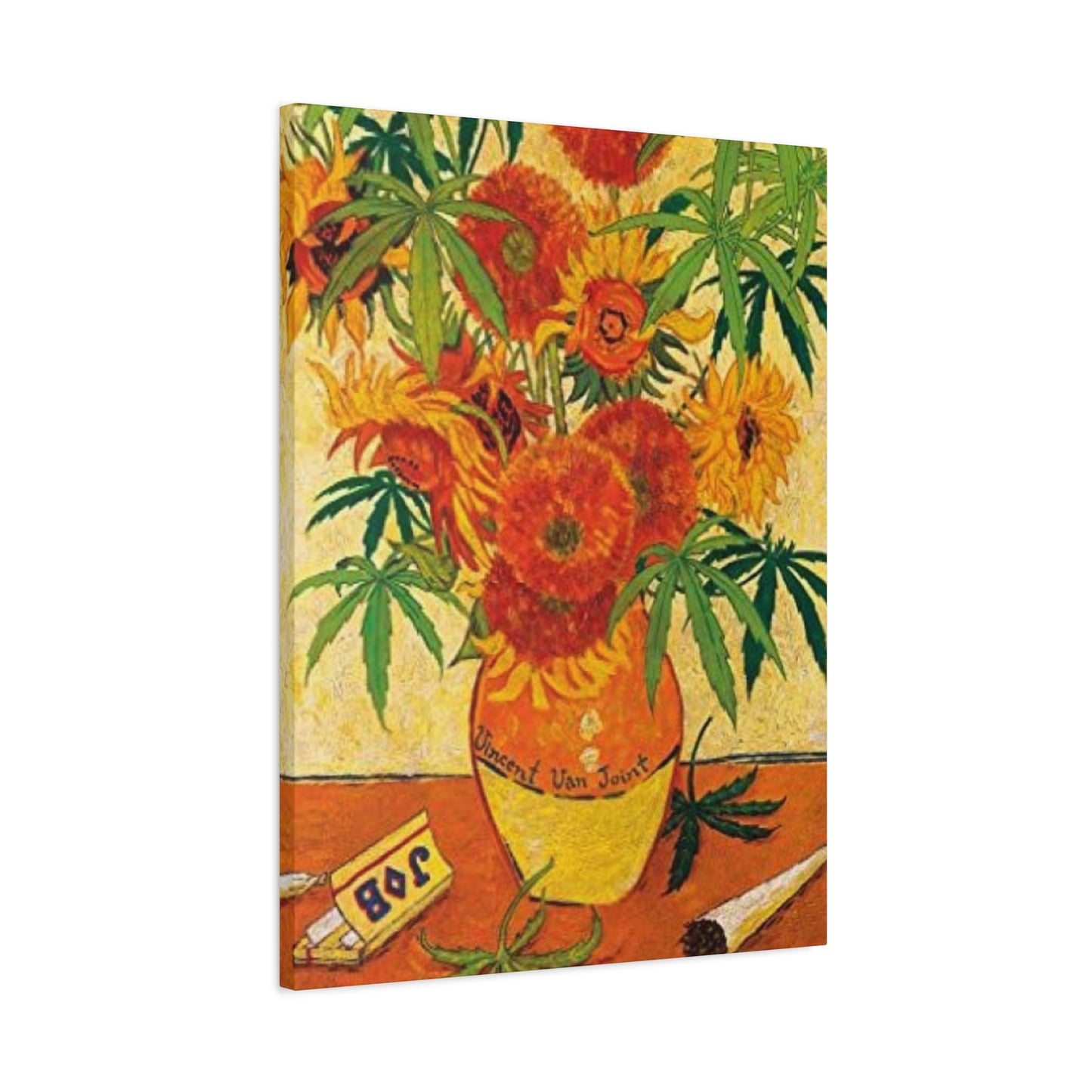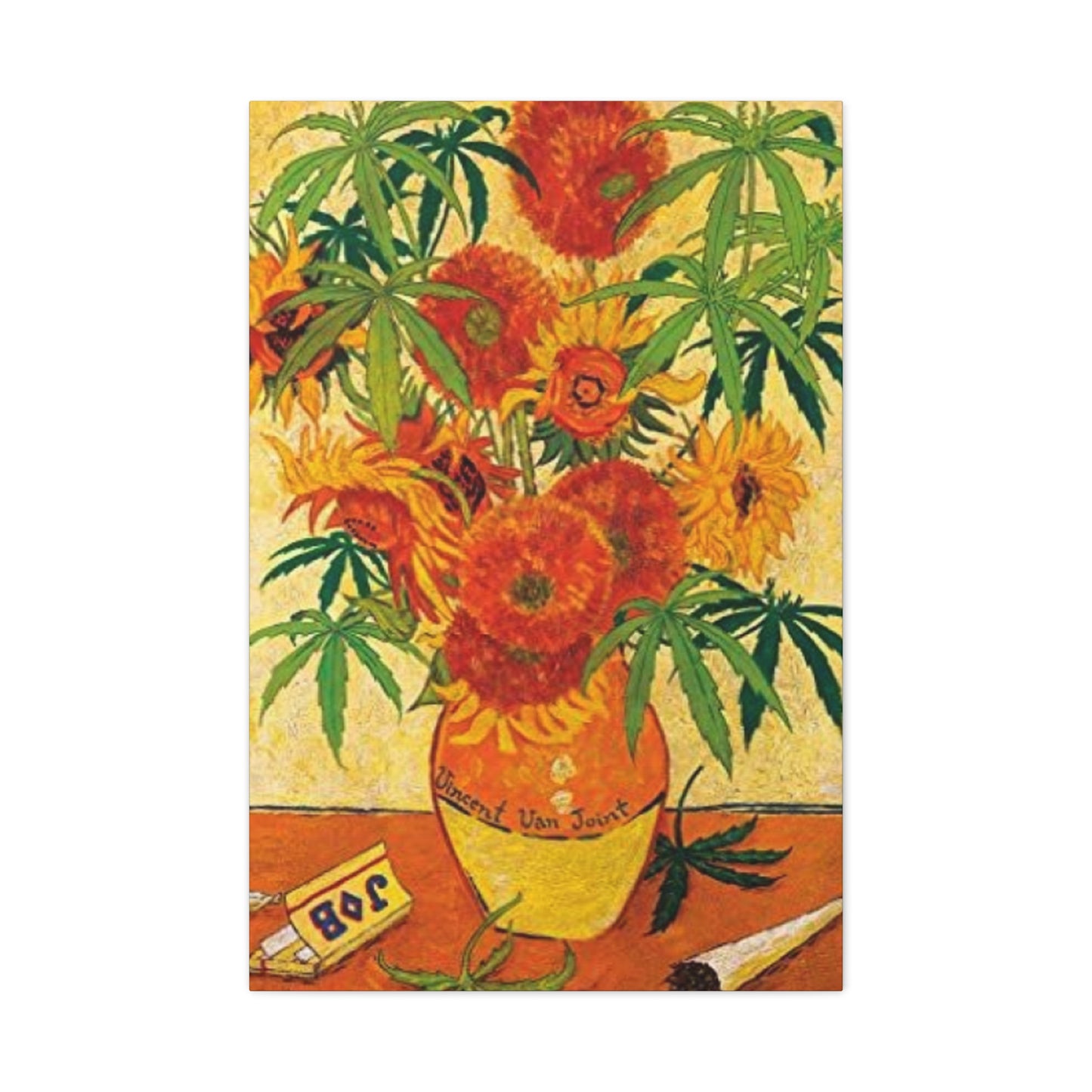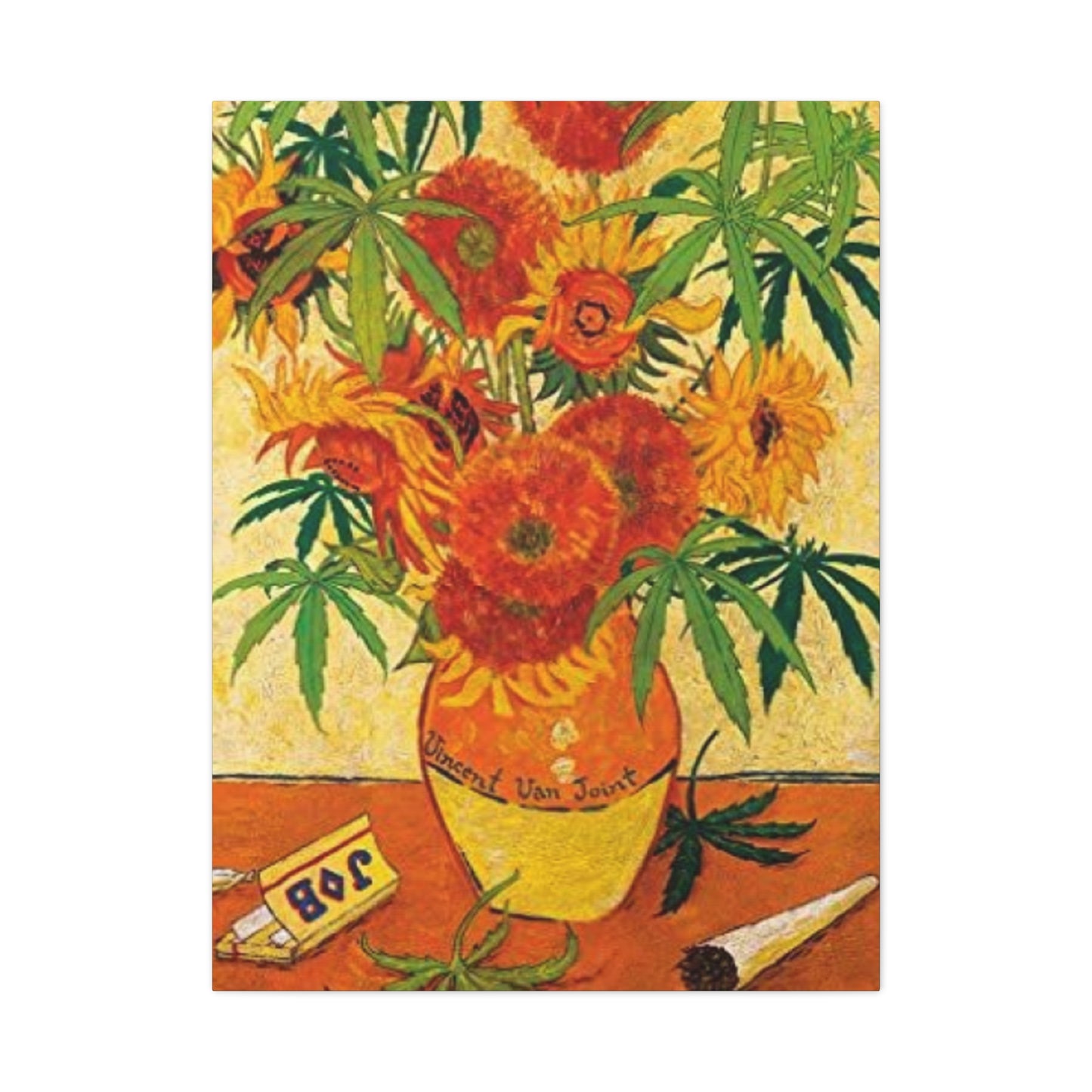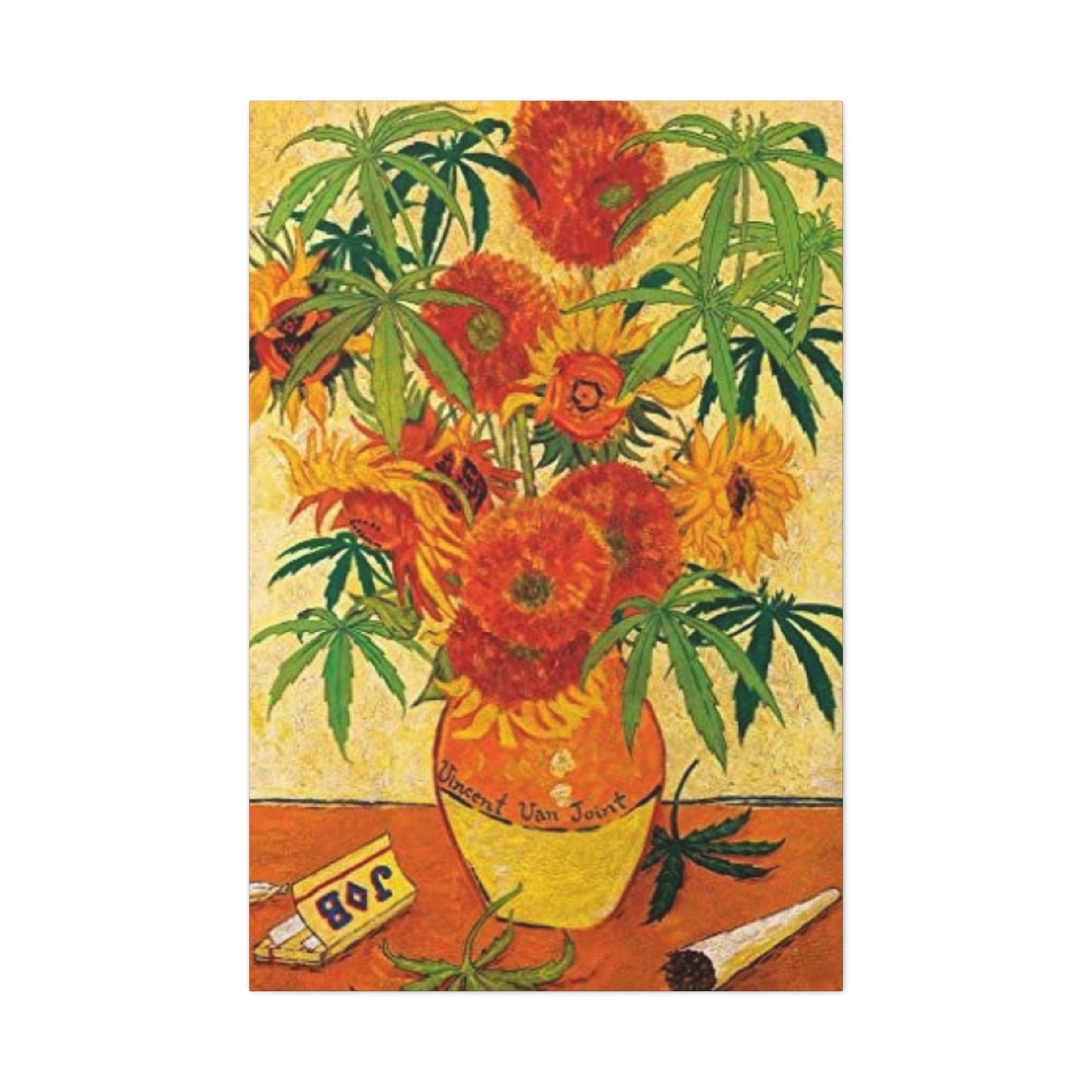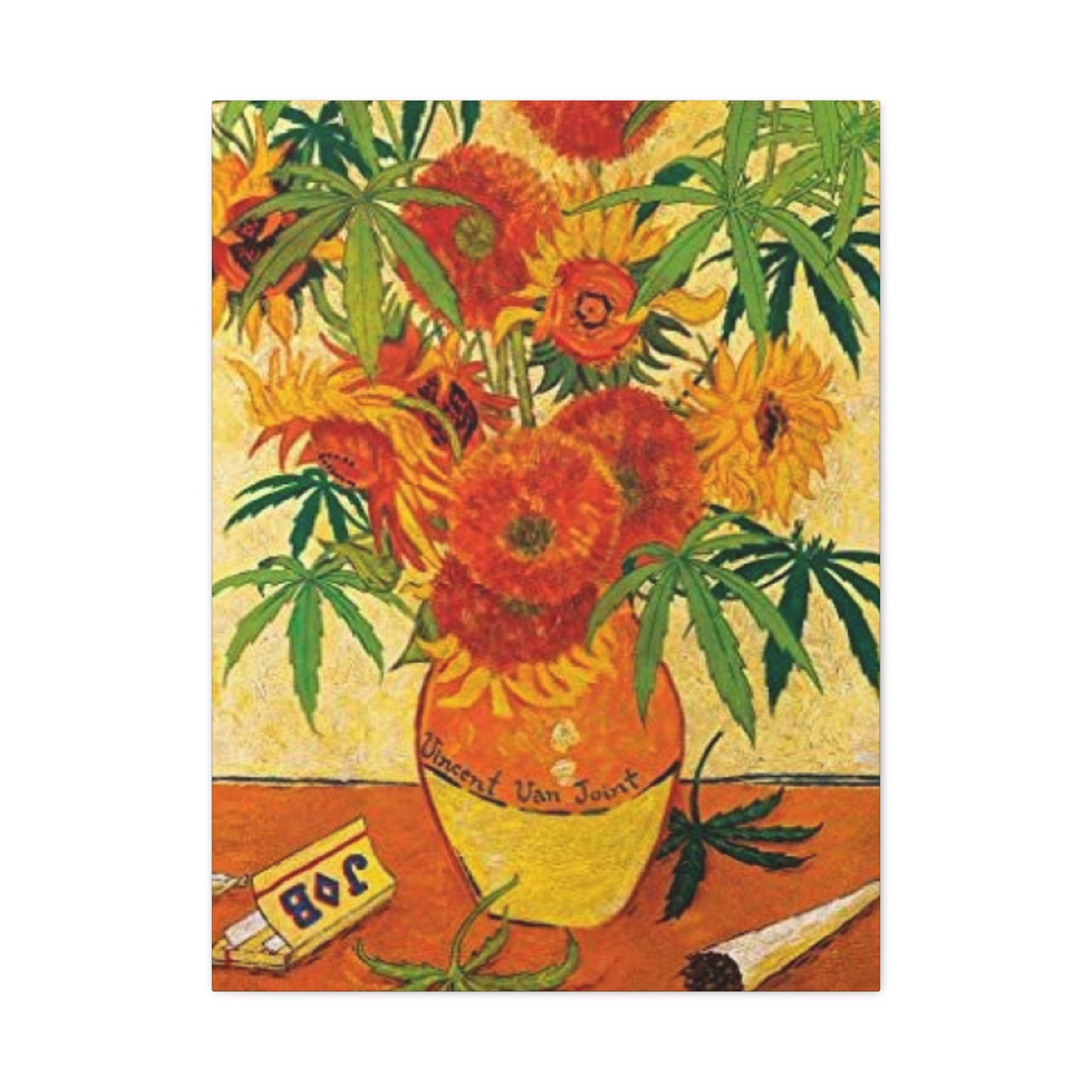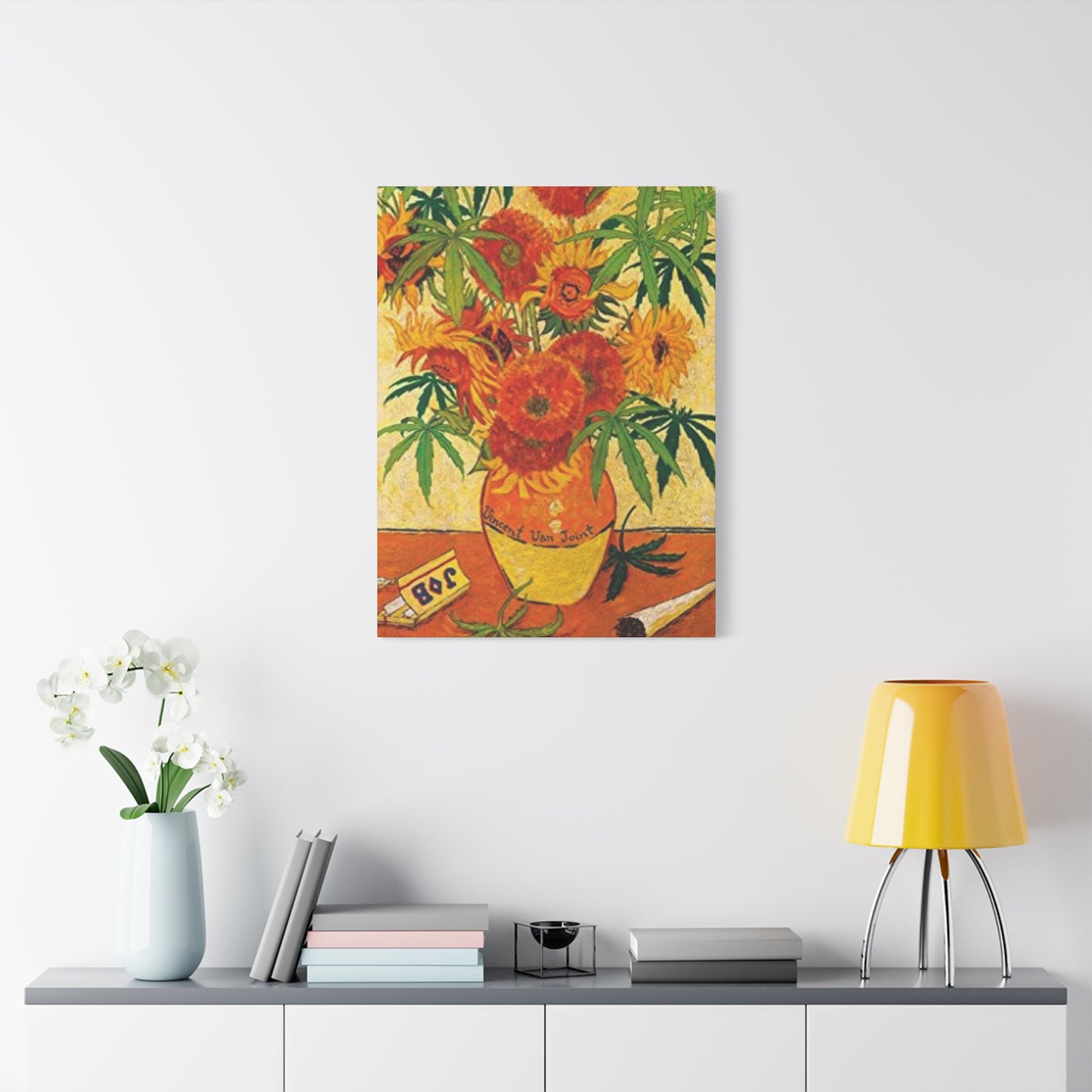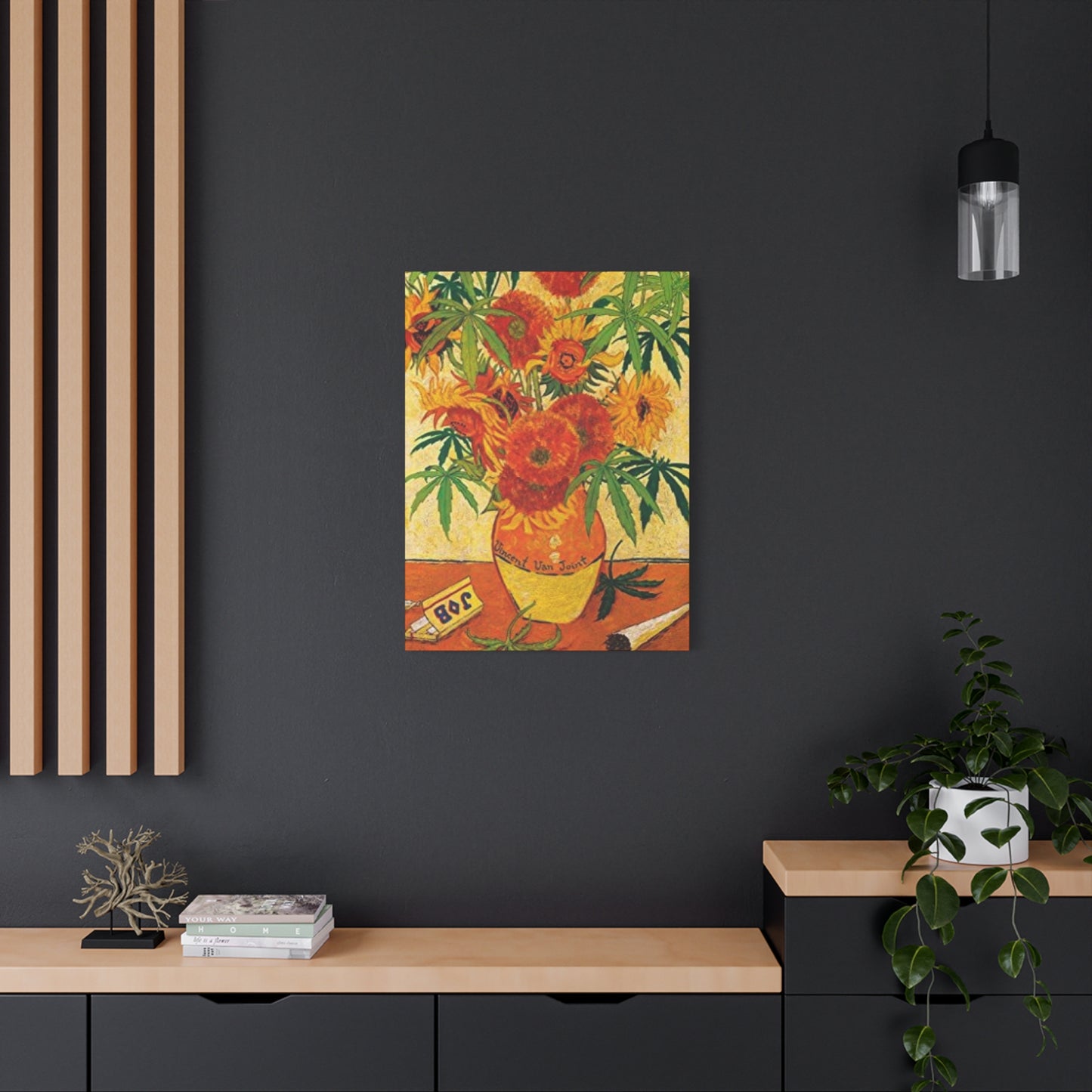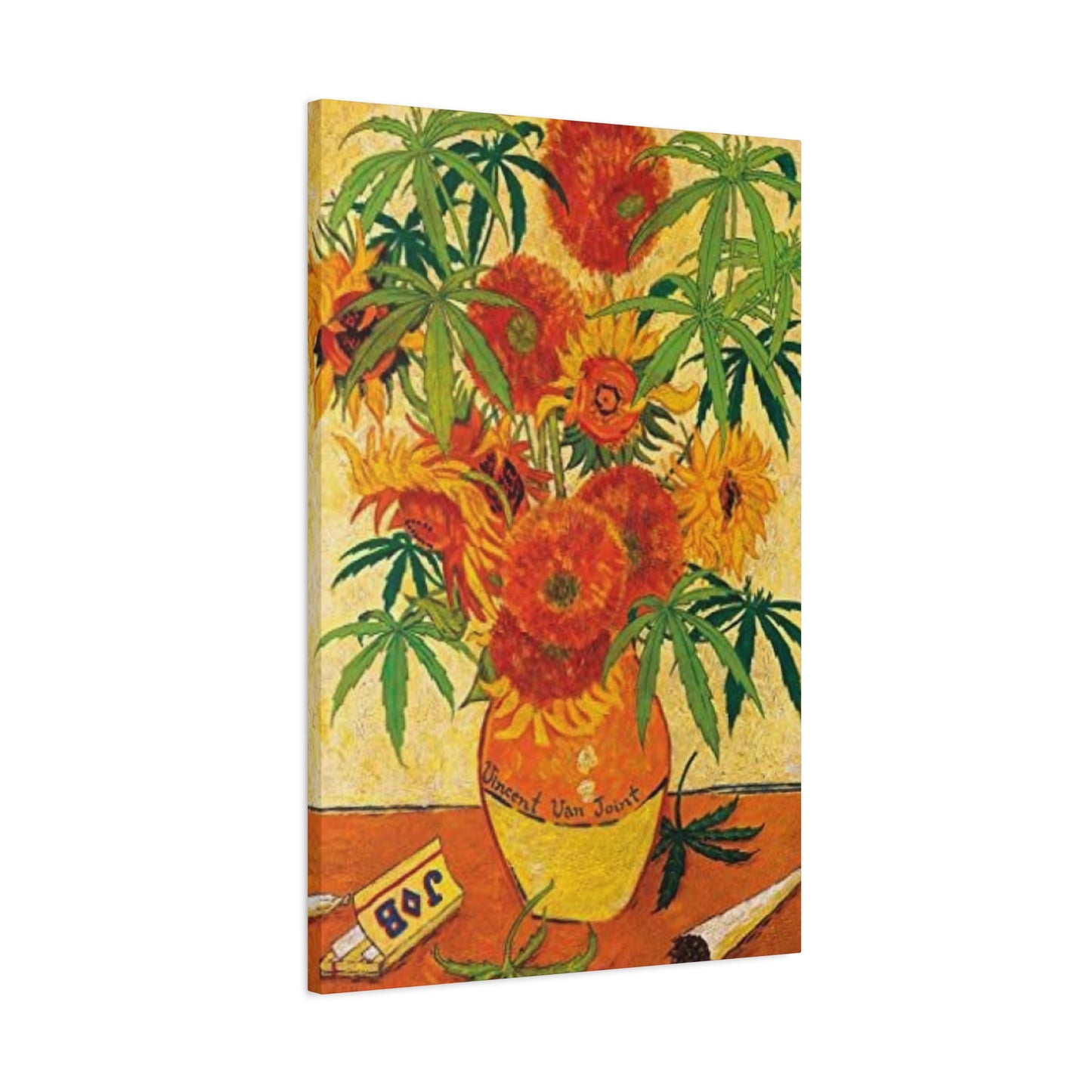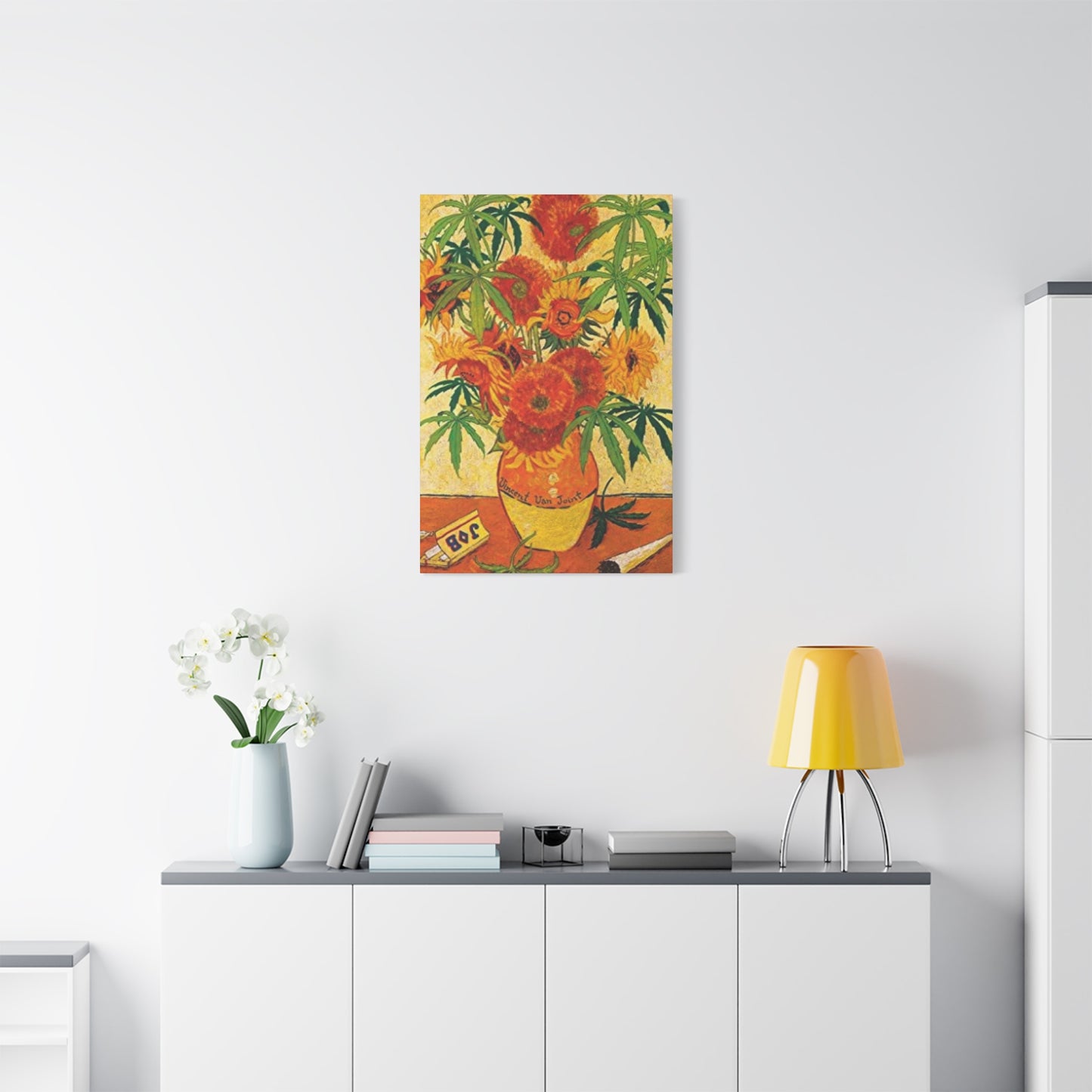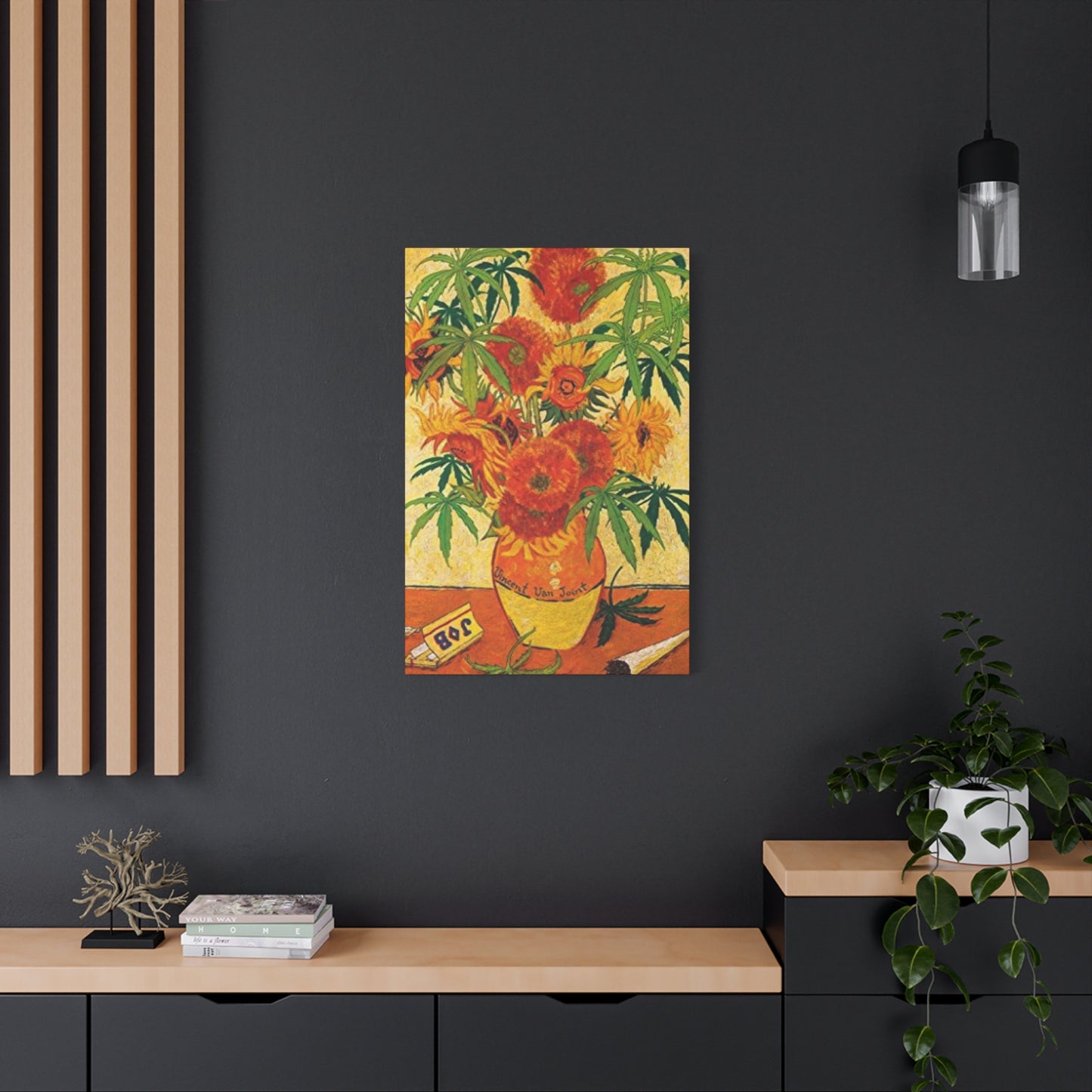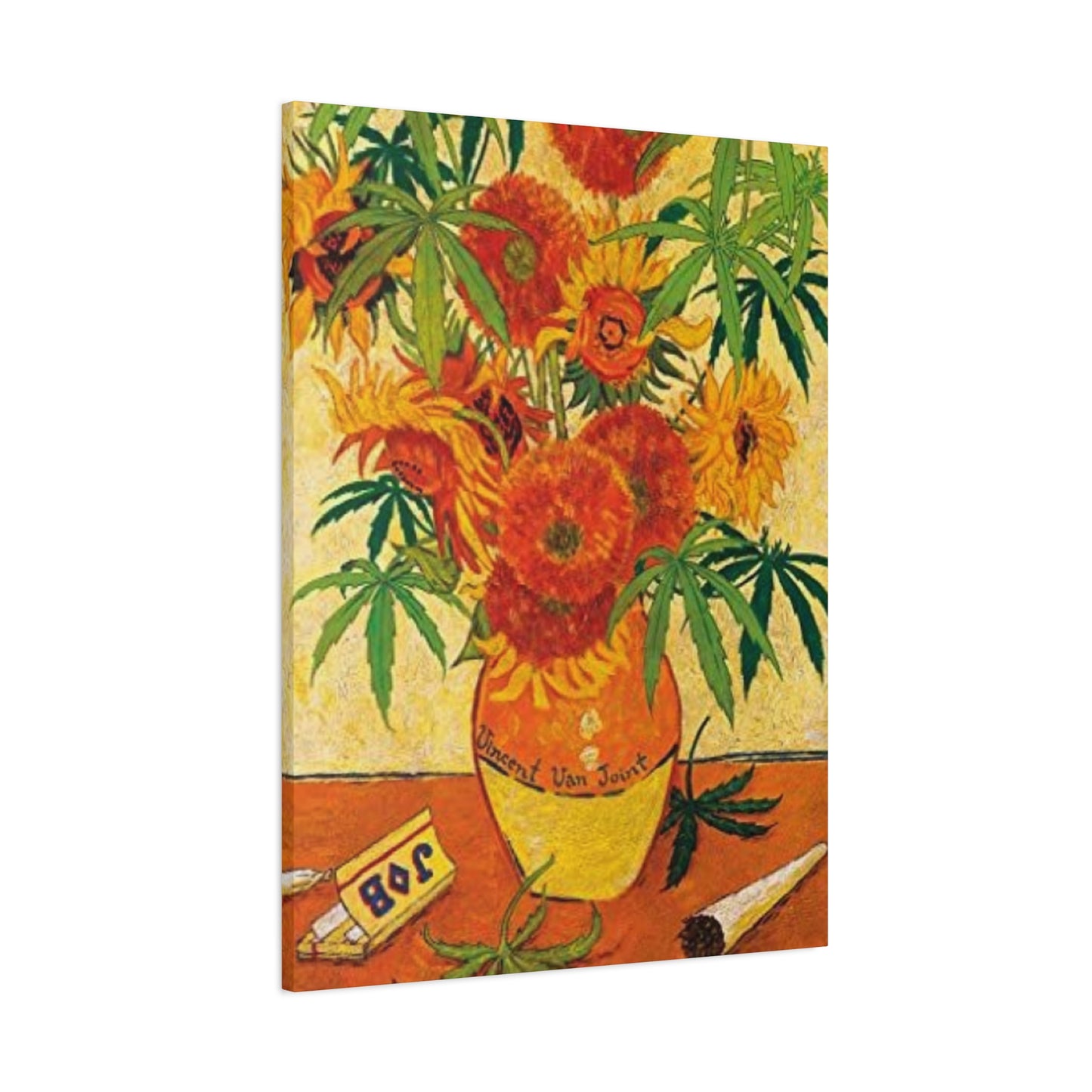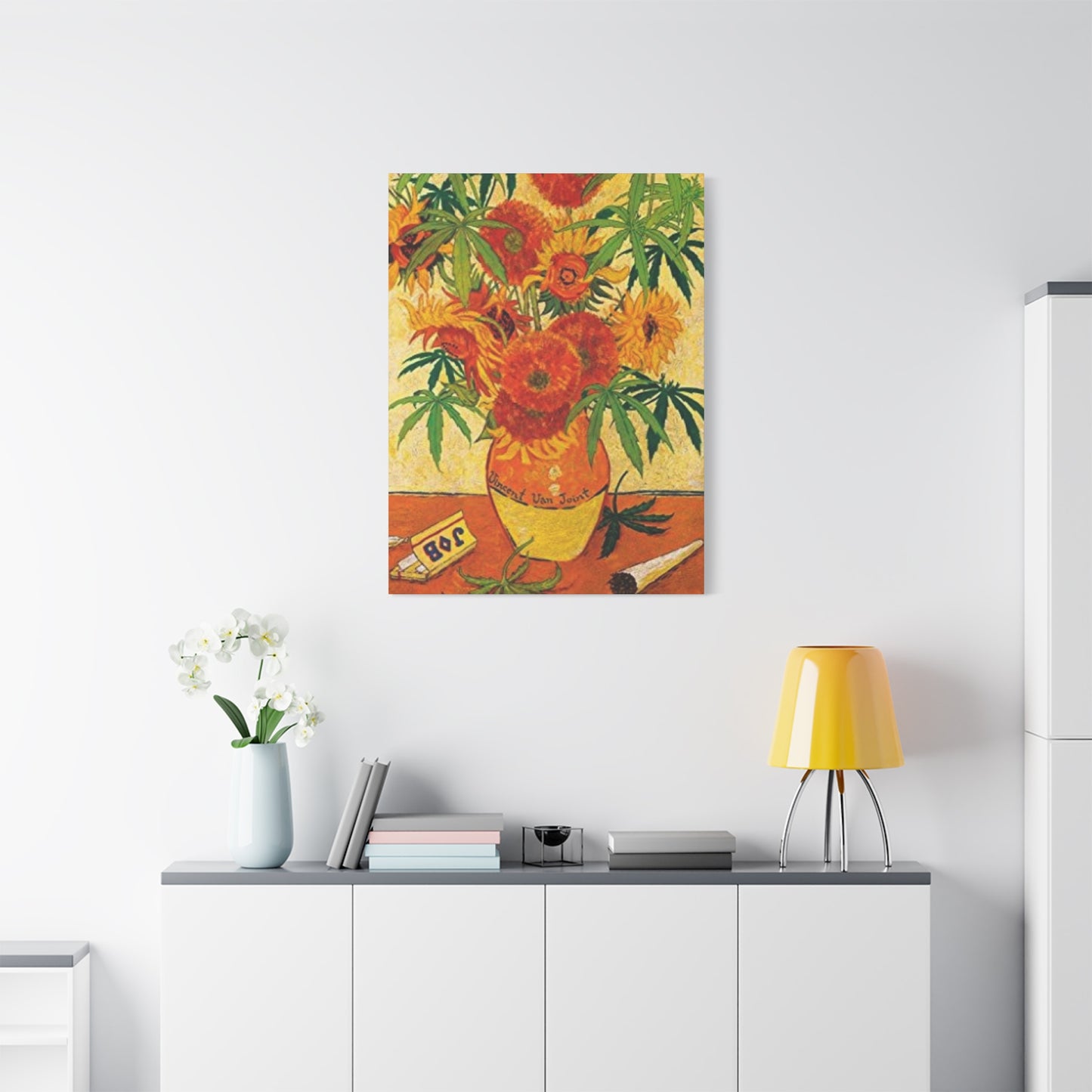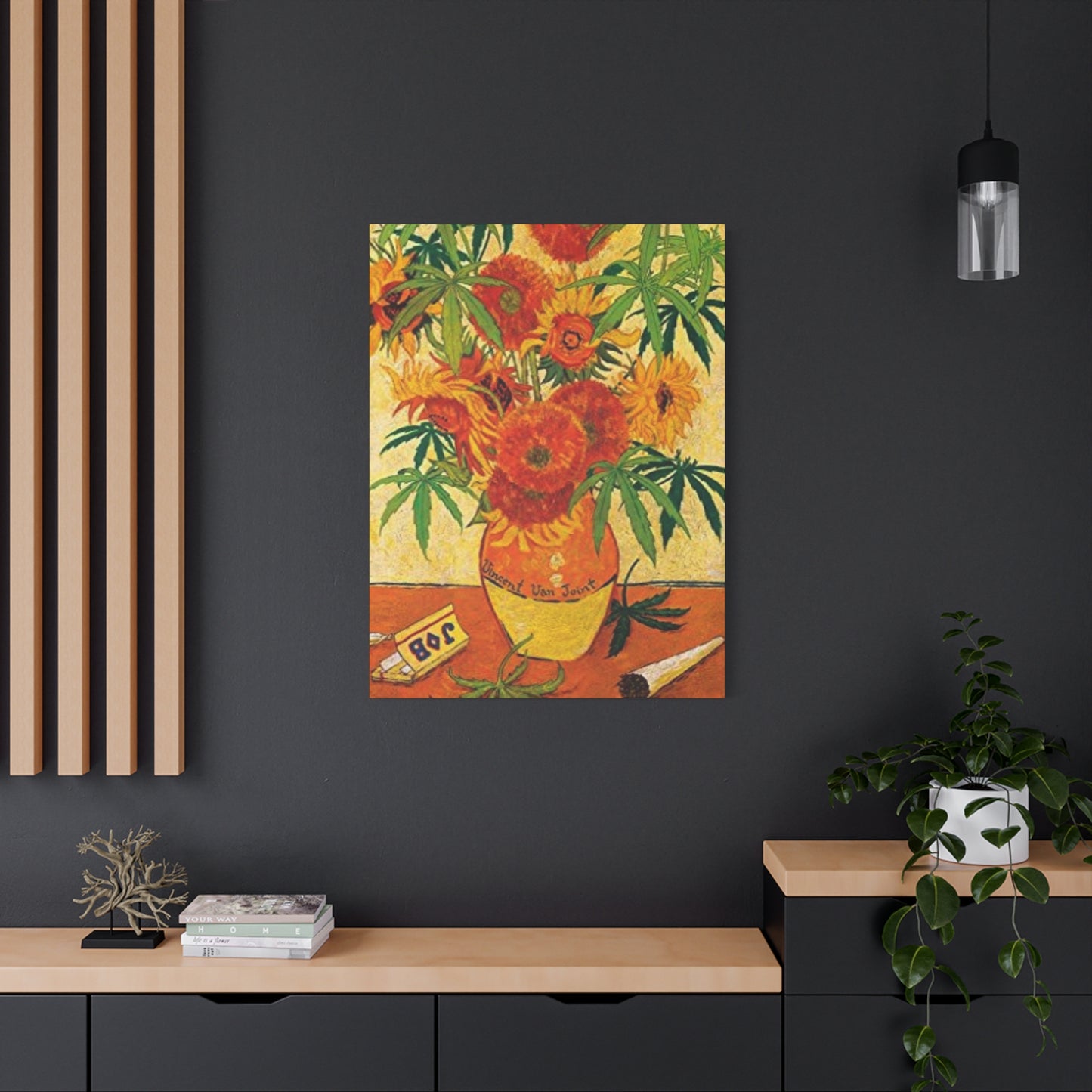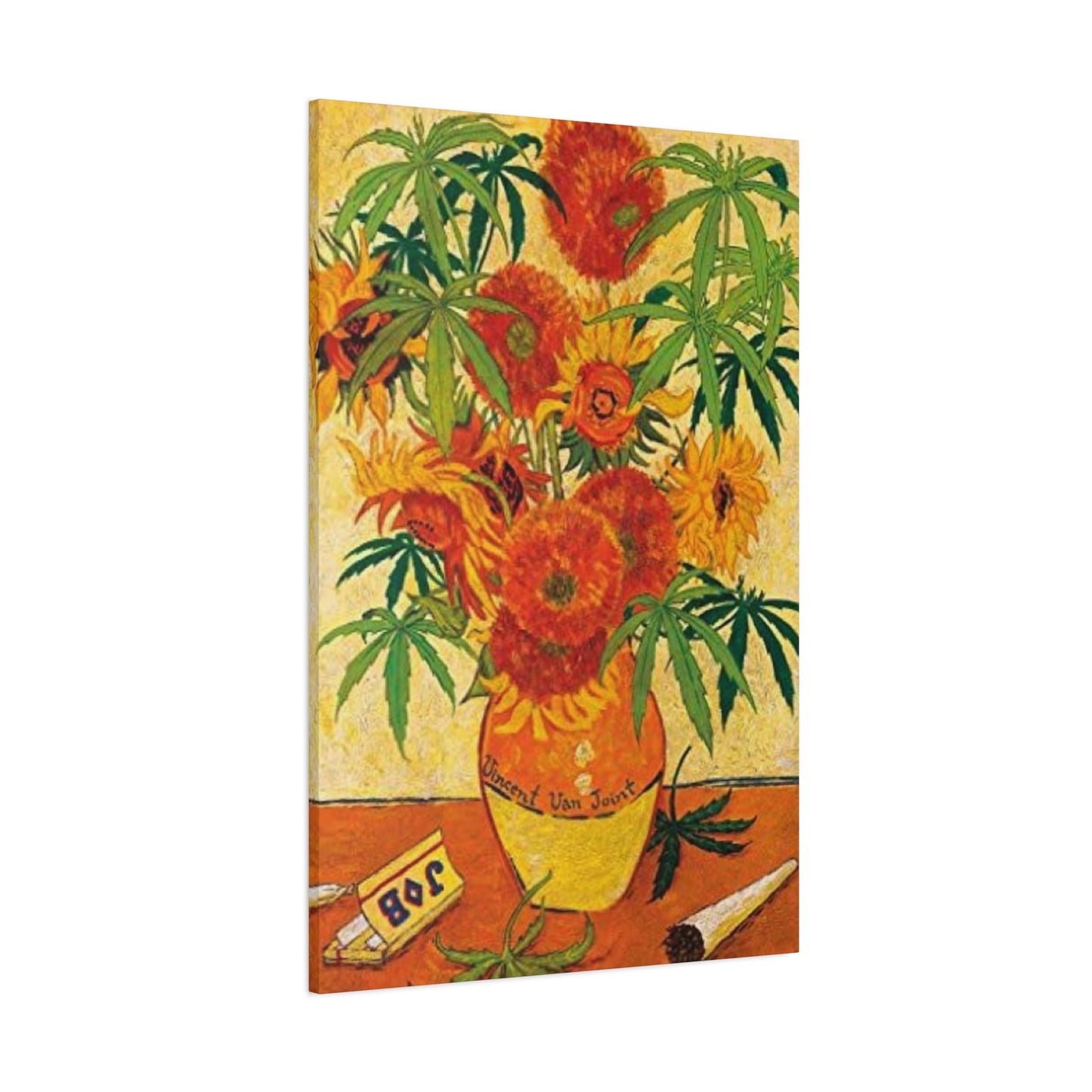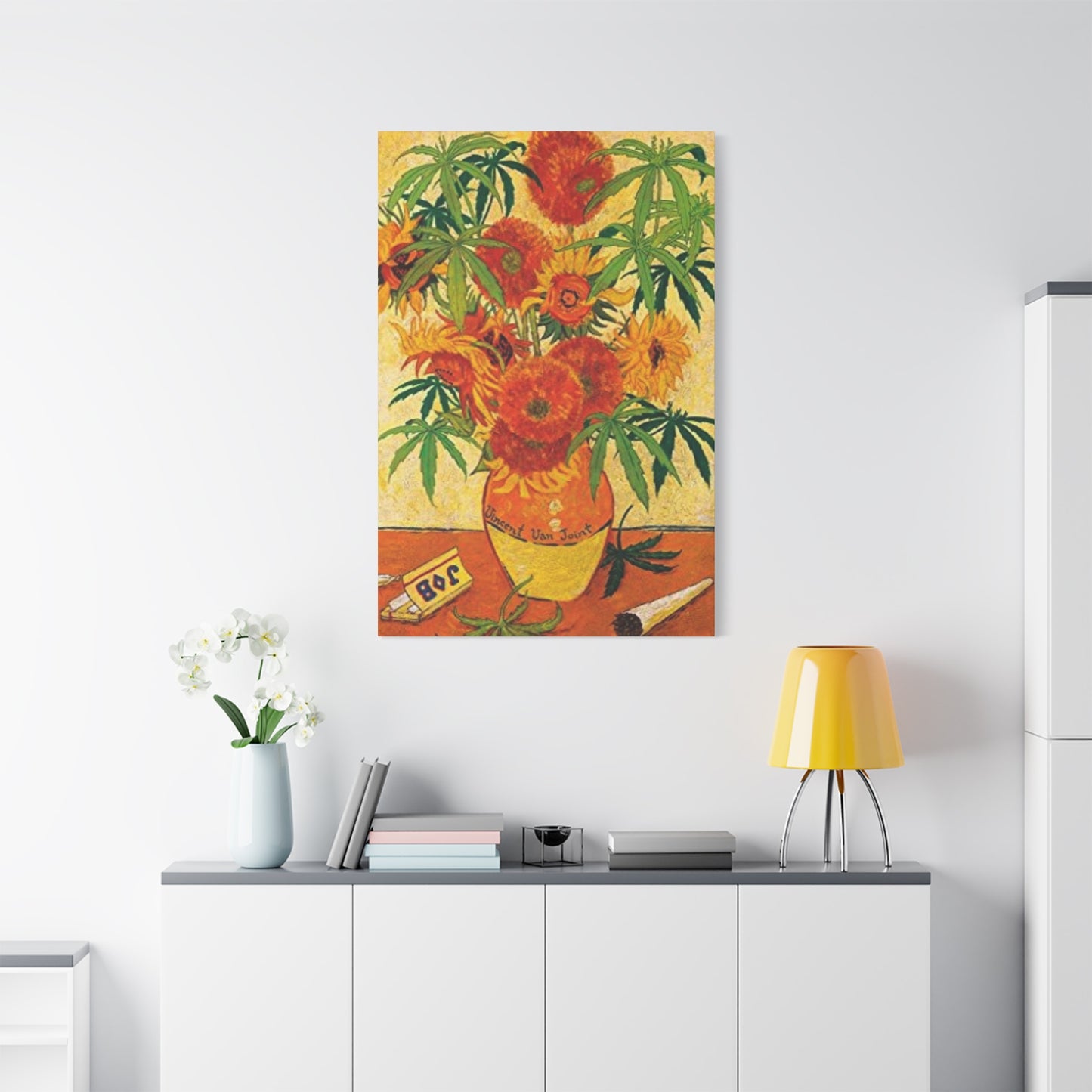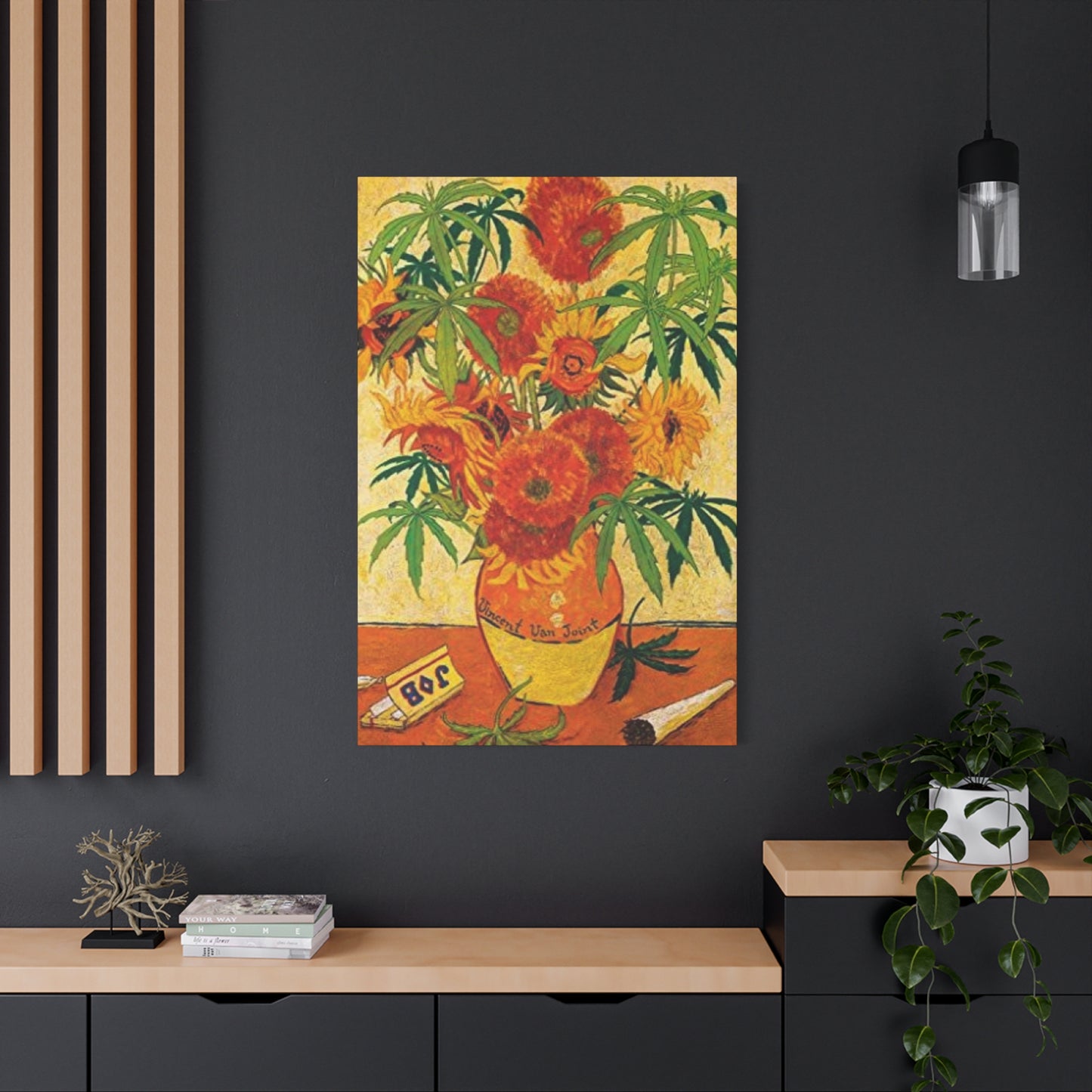Contemporary Cannabis: Vase and Joint marijuana Wall Art for Trendsetters
Decorating living spaces with marijuana-themed wall art has become increasingly popular among enthusiasts and interior design aficionados alike. The growing acceptance of cannabis culture has paved the way for artistic expressions that celebrate this botanical wonder through various mediums, particularly canvas prints featuring vases, joints, and other marijuana-related imagery. This comprehensive exploration delves into the world of cannabis wall art, examining its aesthetic appeal, cultural significance, and practical considerations for incorporating these pieces into contemporary home decor.
The Rising Popularity of Marijuana Wall Art in Contemporary Spaces
The acceptance and legalization of marijuana in numerous regions have significantly influenced how people express their appreciation for cannabis culture within their personal spaces. Marijuana wall art has evolved from underground countercultural symbols to mainstream decorative elements that grace homes, offices, and commercial establishments. This transformation reflects broader societal shifts in attitudes toward cannabis, moving from taboo subject matter to celebrated botanical art.
Interior designers and homeowners now recognize marijuana-themed canvas prints as legitimate artistic expressions that can enhance various design aesthetics. The versatility of these artworks allows them to complement minimalist, bohemian, industrial, and contemporary design schemes. Whether featuring realistic botanical illustrations of cannabis plants, abstract interpretations of marijuana culture, or stylized representations of vases and joints, these pieces offer unique visual interest that sparks conversation and reflects personal values.
The artistic merit of marijuana wall art extends beyond mere symbolism. Many contemporary artists approach cannabis imagery with sophisticated techniques, employing various artistic styles ranging from photorealism to abstract expressionism. These pieces often showcase intricate details of cannabis leaves, the crystalline structure of trichomes, or the elegant curves of smoking accessories, transforming everyday objects into subjects worthy of artistic contemplation.
Canvas prints featuring marijuana themes have become accessible to wider audiences through online marketplaces and specialized galleries. This accessibility has democratized cannabis art, allowing enthusiasts from all backgrounds to curate collections that resonate with their personal aesthetic preferences. The variety available ensures that individuals can find pieces matching their specific tastes, whether they prefer subtle, sophisticated representations or bold, statement-making designs.
Artistic Styles and Approaches to Cannabis Wall Art
Cannabis wall art encompasses an impressive range of artistic styles, each offering distinct visual appeal and emotional resonance. Realistic botanical illustrations capture the intricate beauty of marijuana plants with scientific precision, highlighting the serrated edges of leaves, the delicate structure of flowers, and the complex network of veins that characterize cannabis foliage. These pieces appeal to both botanical enthusiasts and those who appreciate detailed, naturalistic artwork.
Abstract interpretations of marijuana themes offer another compelling approach to cannabis wall art. Artists working in abstract styles might deconstruct the iconic cannabis leaf into geometric patterns, explore the interplay of colors associated with marijuana culture, or create compositions that evoke the sensory experiences related to cannabis consumption. These pieces invite viewers to engage with marijuana imagery on a conceptual level, moving beyond literal representation to explore deeper themes of nature, consciousness, and cultural identity.
Contemporary artists have also embraced pop art aesthetics when creating marijuana wall art, drawing inspiration from iconic works of the twentieth century. Bright colors, bold outlines, and graphic compositions characterize this approach, creating visually striking pieces that command attention in any space. Pop art cannabis prints often incorporate cultural references, wordplay, or ironic commentary on marijuana prohibition and legalization, adding layers of meaning to their visual impact.
Vintage-inspired marijuana wall art taps into nostalgia for past eras of cannabis culture, from the psychedelic posters of the counterculture movement to the understated elegance of mid-century botanical prints. These pieces often employ period-appropriate color palettes, typography, and compositional techniques, creating artworks that feel simultaneously contemporary and timeless. Vintage-style cannabis prints appeal to collectors who appreciate historical design movements and wish to incorporate those aesthetics into modern spaces.
Vase Arrangements Featuring Cannabis in Artistic Compositions
The depiction of cannabis in vases represents a particularly elegant approach to marijuana wall art, treating the plant as a subject worthy of still life composition. These artworks celebrate cannabis as a botanical specimen, positioning it alongside traditional subjects of floral arrangement and drawing parallels between marijuana appreciation and the long artistic tradition of flower painting. Vase compositions featuring cannabis elevate the plant to the status of decorative flora, challenging lingering stigmas while showcasing its natural beauty.
Artists creating vase and cannabis compositions employ various techniques to capture the unique characteristics of marijuana plants. The distinctive shape of cannabis leaves provides striking visual contrast when arranged in vessels, whether depicted in simple glass containers that highlight the plant's natural form or elaborate decorative vases that create dialogue between container and contents. These compositions often explore color relationships, juxtaposing the vibrant greens of fresh cannabis against complementary backgrounds or the neutral tones of ceramic vessels.
The styling of cannabis in vases within wall art can range from minimalist arrangements featuring single stems to abundant bouquets that celebrate the plant's lush foliage. Minimalist compositions appeal to those who prefer understated elegance, allowing the unique silhouette of cannabis leaves to serve as the primary focal point. More elaborate arrangements might incorporate multiple strains, showcasing the diversity of leaf shapes and colors found within the cannabis family, or combine marijuana with other botanical elements to create complex, layered compositions.
Lighting plays a crucial role in vase and cannabis wall art, with artists carefully considering how illumination interacts with plant material. Backlighting can create dramatic silhouettes that emphasize the distinctive profile of cannabis leaves, while side lighting reveals texture and depth, highlighting the three-dimensional quality of plant arrangements. Some artists explore translucency, showing how light filters through cannabis leaves to create glowing effects that emphasize the plant's organic structure.
The choice of vase style within these compositions contributes significantly to the overall aesthetic. Modern glass vessels create clean, contemporary presentations that allow cannabis to take center stage, while vintage containers add character and historical resonance. Ceramic vases introduce texture and color opportunities, and unconventional vessels like laboratory glassware or repurposed containers can inject personality and narrative into compositions. Each vase selection influences the mood and message of the artwork, allowing artists to craft specific visual statements about marijuana culture and appreciation.
Joint Imagery and Smoking Culture in Canvas Prints
Representations of joints and smoking accessories constitute another significant category within marijuana wall art, celebrating the ritualistic and social aspects of cannabis consumption. These artworks range from realistic depictions of meticulously rolled joints to stylized representations that transform smoking implements into graphic design elements. Joint imagery in wall art acknowledges the cultural practices surrounding marijuana use while exploring the aesthetic potential of these familiar objects.
Photorealistic joint artwork captures the intricate details of cannabis preparation and consumption, from the texture of rolling papers to the twisted ends of freshly prepared joints. These pieces often employ dramatic lighting to create depth and dimension, transforming simple objects into subjects of contemplation. The precision required to render joints realistically demonstrates technical artistic skill while elevating everyday items to the status of fine art subjects.
Abstract and graphic interpretations of joint imagery offer alternative approaches to representing smoking culture. Artists might reduce joints to their essential geometric forms, creating minimalist compositions that suggest rather than explicitly depict. Others incorporate joints into larger patterns or designs, using repetition and variation to create visually rhythmic compositions. These stylized approaches allow marijuana wall art to function effectively in diverse interior spaces, from residential settings to commercial establishments where subtle representation might be preferred.
Cultural commentary frequently appears in joint-themed wall art, with artists using smoking imagery to explore themes of legalization, personal freedom, and social justice. Some pieces juxtapose joint imagery with text or symbols that reference marijuana legislation, creating artworks that function as both aesthetic objects and political statements. This dimension adds depth to marijuana wall art, transforming decorative pieces into conversation starters that invite viewers to consider broader issues surrounding cannabis culture.
The composition of joint-focused wall art varies considerably based on artistic intention and target audience. Solo joint representations against clean backgrounds create iconic, almost reverential presentations of smoking culture. Multiple joints arranged in patterns explore repetition and variation, while scenes depicting joints in context with hands, ashtrays, or other paraphernalia tell stories about the social rituals of cannabis consumption. Each compositional choice shapes viewer interpretation and determines how effectively the artwork integrates into specific interior environments.
Palette Selection in Marijuana Wall Art
Color choices in marijuana wall art significantly impact the emotional resonance and visual effectiveness of pieces. The natural green tones associated with cannabis provide a starting point for color exploration, but artists working in this genre employ diverse palettes to achieve various aesthetic effects. Understanding color psychology helps in selecting marijuana wall art that complements existing decor while evoking desired emotional responses.
Natural green palettes dominate much marijuana wall art, celebrating the plant's inherent coloration. These pieces might feature realistic renderings in various shades of green, from the deep emerald of healthy mature leaves to the lighter lime tones of new growth. Monochromatic green compositions create calming, organic environments that connect interior spaces with nature. The prevalence of green in marijuana wall art also allows these pieces to coordinate easily with plant-filled interiors, creating cohesive biophilic design schemes.
Complementary color schemes introduce visual dynamism to cannabis wall art. Pairing green cannabis imagery with purple accents references the colorful strains found in some marijuana varieties while creating vibrant compositions that energize spaces. Orange and red complements to green cannabis elements generate warm, inviting atmospheres, while blue accents create cooler, more contemplative moods. Artists manipulating complementary colors in marijuana wall art can guide viewer emotional responses and ensure pieces harmonize with specific interior color schemes.
Monochromatic approaches to marijuana wall art explore the full tonal range of single colors, creating sophisticated pieces that work in minimalist or elegantly designed spaces. Black and white cannabis prints offer timeless appeal, emphasizing form and composition over color relationships. These pieces integrate seamlessly into diverse interior styles and allow marijuana imagery to function as graphic design elements rather than literal botanical representations. Grayscale cannabis art appeals particularly to those seeking subtle incorporation of marijuana themes into professional or conservative environments.
Unexpected color treatments transform marijuana wall art into bold design statements. Artists might render cannabis leaves in metallics, creating glamorous pieces that catch light and add luxury to spaces. Neon palettes inject energy and reference contemporary digital aesthetics, appealing to younger demographics and those embracing maximalist design trends. Pastel interpretations of marijuana imagery create soft, approachable pieces that challenge assumptions about cannabis culture while offering gentle visual interest. These unconventional color choices expand the possibilities for marijuana wall art, ensuring options exist for every aesthetic preference.
Placement Strategies for Cannabis Canvas Prints
Selecting appropriate sizes and placement locations for marijuana wall art requires careful consideration of room proportions, viewing distances, and overall design objectives. Canvas prints featuring cannabis themes are available in dimensions ranging from small accent pieces to oversized statement walls, each size category serving distinct decorative functions and spatial requirements.
Large-scale cannabis wall art creates dramatic focal points that anchor rooms and establish visual hierarchies within spaces. Oversized canvas prints measuring four feet or larger command attention and work effectively above sofas, beds, or in spacious entryways where they can be appreciated from distance. These substantial pieces allow intricate details in marijuana imagery to remain visible even from across rooms, ensuring the artistic quality of work remains apparent. Large cannabis prints work particularly well in open-concept living areas, loft spaces, or rooms with high ceilings where appropriately scaled artwork prevents walls from feeling empty.
Medium-sized marijuana canvas prints offer versatility in placement and styling options. Pieces measuring between two and four feet accommodate most standard furniture arrangements and work effectively in dining areas, bedrooms, home offices, and living rooms. Medium prints can stand alone as individual artworks or combine with other pieces to create gallery wall arrangements. This size category provides sufficient visual impact without overwhelming smaller spaces, making medium cannabis prints popular choices for apartment dwellers and those working with limited square footage.
Small cannabis wall art functions as accent pieces that add personality without dominating spaces. Compact prints measuring under two feet work beautifully in arrangements featuring multiple artworks, allowing collectors to display several pieces representing different styles or aspects of marijuana culture. Small cannabis prints fit effectively in narrow spaces like hallways, bathrooms, or above shelving units where larger pieces would feel cramped. These smaller options also provide affordable entry points for those beginning to collect marijuana wall art.
Vertical versus horizontal orientation impacts how cannabis wall art integrates into spaces. Vertical compositions emphasizing the upward growth patterns of marijuana plants create the illusion of height, making rooms feel more spacious. These pieces work well in rooms with low ceilings or alongside tall furniture elements. Horizontal cannabis prints complement wide furniture pieces and create visual flow along walls, effectively filling spaces above sofas, consoles, or buffets. Square formats offer balanced compositions that work in various configurations and prove particularly effective in grid-style gallery wall arrangements.
Placement height significantly affects viewer engagement with marijuana wall art. The standard recommendation places artwork centers at eye level, approximately 57 to 60 inches from the floor, ensuring comfortable viewing angles. However, placement should account for typical viewing positions within spaces. Cannabis wall art in living areas where people primarily sit might hang slightly lower for optimal appreciation, while pieces in entryways or hallways can position higher to remain visible over furniture or during standing interactions.
Frame Selection and Presentation Options for Marijuana Canvas Prints
The presentation method significantly influences how marijuana wall art integrates into interior spaces and impacts the overall aesthetic effect of pieces. Canvas prints offer various framing and mounting options, each contributing distinct visual characteristics and stylistic implications to marijuana-themed artwork.
Gallery-wrapped canvas presents marijuana wall art in a contemporary, streamlined manner. This method stretches printed canvas around wooden frames, extending imagery to the sides of pieces and eliminating the need for traditional frames. Gallery wraps create modern, clean presentations that work particularly well in minimalist or contemporary interiors. The absence of frames allows marijuana imagery to take center stage without competing visual elements, and the three-dimensional quality of wrapped canvases adds subtle depth to walls. Many cannabis wall art enthusiasts prefer gallery wraps for their museum-quality appearance and straightforward installation process.
Traditional framing adds polish and protection to marijuana canvas prints while offering opportunities to customize presentation styles. Wood frames in natural finishes complement the organic subject matter of cannabis artwork, creating warm, cohesive presentations. Black frames provide dramatic contrast that emphasizes marijuana imagery and works effectively in modern or industrial interiors. White or light-colored frames create airy, gallery-like presentations suitable for minimalist spaces. The selection of frame style, color, and profile width allows collectors to personalize marijuana wall art and ensure pieces harmonize with existing decor elements.
Floating frames create distinctive presentations where visible gaps separate marijuana canvas prints from surrounding frame materials. This mounting method highlights the three-dimensional quality of canvas while adding contemporary sophistication. Floating presentations work particularly effectively with cannabis artwork featuring clean edges or significant negative space, as the separation draws attention to composition boundaries and creates shadow effects that add visual interest. The elevated positioning of floating frames contributes to a curated, intentional aesthetic appealing to design-conscious collectors.
Matting options introduce additional design possibilities for marijuana wall art, though they function differently with canvas than with paper prints. While traditional matting sits between artwork and frames, canvas pieces might incorporate printed borders that simulate mat effects. These border treatments can include complementary colors, textures, or graphic elements that enhance primary marijuana imagery while providing visual breathing room. Thoughtful border design extends the artistic vision beyond central compositions and helps cannabis wall art integrate more seamlessly into specific color schemes or design styles.
Frameless mounting systems offer ultra-modern presentation methods for marijuana canvas prints. Standoff mounts attach directly to walls using metal posts, creating floating effects that emphasize the physical presence of artwork. These systems work exceptionally well in contemporary or industrial spaces where mechanical elements complement overall aesthetics. Magnetic mounting systems provide flexibility for collectors who enjoy regularly rotating displayed artwork, allowing easy swapping of marijuana canvas prints without wall damage. These innovative presentation methods appeal to those seeking distinctive, unconventional ways to display cannabis-themed art.
Creating Gallery Wall Arrangements with Cannabis Art
Gallery walls featuring marijuana-themed artwork offer opportunities to create personalized, visually compelling displays that showcase collections while adding significant character to spaces. Thoughtful arrangement of multiple cannabis canvas prints transforms ordinary walls into curated exhibitions that reflect collector personalities and demonstrate sophisticated design sensibilities.
Symmetrical gallery wall layouts create orderly, balanced presentations of marijuana wall art. Grid arrangements featuring identically sized cannabis prints in uniform spacing provide clean, contemporary aesthetics that work effectively in modern interiors. These structured layouts bring cohesion to diverse marijuana imagery, allowing pieces featuring different styles or subjects to coexist harmoniously. Symmetrical arrangements also simplify planning and installation processes, as precise measurements and consistent spacing create predictable, reproducible results. This approach particularly suits spaces where calm, organized atmospheres take priority.
Asymmetrical gallery walls offer dynamic, organic alternatives for displaying cannabis art collections. These arrangements mix various sizes of marijuana canvas prints, creating visual interest through contrast and variation. Asymmetric layouts can incorporate vertical and horizontal orientations, different frame styles, and diverse artistic approaches to cannabis imagery. The irregular spacing and unexpected juxtapositions characteristic of asymmetric gallery walls create engaging, eye-catching displays that invite extended viewing and discovery. This arrangement style allows collectors to grow their cannabis art collections organically, adding new pieces as they acquire them without requiring complete redesigns.
Thematic groupings provide cohesive frameworks for marijuana wall art arrangements. Collections might focus on specific aspects of cannabis culture, such as botanical illustrations of different strains, various artistic interpretations of joints, or diverse representations of marijuana in vases. Thematic galleries create narrative threads that connect individual pieces, allowing viewers to appreciate both standalone artworks and the relationships between them. This approach works particularly well for collectors with focused interests in specific aspects of marijuana culture or particular artistic styles.
Color-coordinated gallery walls emphasize visual harmony across cannabis art collections. Arranging marijuana prints according to shared color palettes creates cohesive, professionally designed appearances that enhance existing interior color schemes. Collectors might group green-toned botanical cannabis prints separately from pieces featuring complementary colors, or create gradients transitioning through various hues. Color coordination helps marijuana wall art function as unified design elements rather than disparate individual pieces, strengthening their impact on overall room aesthetics.
The salon-style gallery wall represents a maximalist approach to displaying marijuana art, featuring closely hung pieces covering significant wall areas from floor to ceiling. This traditional arrangement method creates immersive experiences, surrounding viewers with cannabis imagery and demonstrating passionate collector enthusiasm. Salon walls accommodate diverse artwork sizes, styles, and frames, unified through proximity and shared thematic content. While requiring more planning and pieces than other arrangement methods, salon-style cannabis art galleries make powerful design statements that transform ordinary rooms into dedicated celebration spaces for marijuana culture.
Matching Marijuana Wall Art with Interior Design Styles
Successfully incorporating cannabis-themed wall art requires understanding how marijuana imagery interacts with various interior design aesthetics. The versatility of contemporary cannabis art allows integration into diverse stylistic contexts, from traditional to avant-garde, provided collectors select appropriate pieces and employ thoughtful styling strategies.
Modern minimalist interiors benefit from carefully selected marijuana wall art that emphasizes clean lines and restrained compositions. Black and white botanical prints of cannabis leaves, simple line drawings of joints, or monochromatic abstract interpretations of marijuana themes work effectively in minimalist spaces. These pared-down representations honor minimalist principles while introducing personality and individual expression. Large-scale, singular cannabis prints often work better than multiple pieces in minimalist contexts, maintaining the uncluttered aesthetics these spaces prioritize. Gallery-wrapped canvases without additional framing complement minimalist design philosophies.
Industrial interiors naturally accommodate marijuana wall art, as both embrace counter-cultural attitudes and celebrate unconventional subject matter. Cannabis prints featuring gritty textures, urban settings, or graphic designs complement exposed brick, metal fixtures, and concrete surfaces characteristic of industrial spaces. Black frames or frameless mounting systems align with industrial aesthetics, while oversized cannabis artwork balances the substantial architectural features typical of these environments. The raw, unpolished qualities of industrial design pair well with bold marijuana imagery that makes unapologetic statements about cannabis culture.
Bohemian interiors embrace marijuana wall art enthusiastically, as both celebrate free-spirited attitudes and eclectic tastes. Colorful, psychedelic cannabis prints fit naturally into boho spaces filled with patterns, textures, and global influences. Vintage-inspired marijuana posters, hand-drawn cannabis illustrations, and mixed-media pieces incorporating marijuana imagery all complement bohemian design philosophies. Layered arrangements featuring multiple cannabis prints alongside other artwork, textiles, and decorative objects create the collected-over-time appearance central to bohemian aesthetics. Natural wood frames or decorative painted frames enhance the artisanal quality valued in boho interiors.
Contemporary spaces characterized by clean lines, neutral palettes, and thoughtful curation accommodate sophisticated marijuana wall art that demonstrates artistic merit beyond subject matter. High-quality photographic prints of cannabis in elegant compositions, abstract interpretations exploring marijuana themes conceptually, or minimalist botanical illustrations work effectively in contemporary interiors. These pieces function as genuine art investments rather than novelty items, appealing to collectors who appreciate aesthetic quality alongside cultural significance. Sleek presentation methods, carefully considered placement, and integration with other contemporary art pieces help marijuana wall art succeed in these refined environments.
Traditional interiors present unique challenges for marijuana wall art but offer opportunities for unexpected, conversation-starting contrasts. Vintage botanical prints depicting cannabis as specimen illustrations can integrate into traditional spaces, particularly when framed in classic styles that match existing artwork. The juxtaposition of marijuana imagery with traditional design elements creates intriguing tension, modernizing conventional spaces while demonstrating homeowner personality. Careful selection and restrained application prevent marijuana wall art from feeling incongruous in traditional settings, with botanical approaches generally working more successfully than explicit smoking culture imagery.
Material Quality and Printing Technologies for Cannabis Canvas Art
The technical aspects of cannabis wall art production significantly impact visual quality, longevity, and overall value of pieces. Understanding printing technologies and material considerations helps collectors make informed decisions when selecting marijuana-themed canvas prints for their spaces.
Giclée printing represents the premium standard for cannabis wall art reproduction, employing archival-quality inks and high-resolution imaging to create museum-grade prints. This digital printing method uses millions of microscopic ink droplets to achieve smooth tonal gradations and precise color matching, ensuring marijuana imagery appears exactly as artists intend. Giclée prints on canvas offer exceptional detail reproduction, capturing the intricate structures of cannabis leaves, the subtle color variations in plant material, and the nuanced textures that make marijuana wall art compelling. The archival inks used in giclée printing resist fading from UV exposure and environmental factors, ensuring cannabis artwork maintains its visual impact for decades with proper care.
Canvas substrate quality varies considerably and directly affects the appearance and durability of marijuana wall art. Premium cotton canvas provides superior ink absorption, creating rich, vibrant colors and sharp details in cannabis imagery. The tight weave of high-quality canvas prevents ink bleeding and maintains image clarity, particularly important for pieces featuring fine botanical details or photorealistic representations. Poly-cotton blends offer enhanced durability and wrinkle resistance while maintaining good print quality, representing practical compromises between pure cotton and fully synthetic materials. Canvas weight, measured in ounces per square yard, indicates thickness and durability, with heavier weights providing more substantial, professional-quality presentations for marijuana wall art.
Protective coatings preserve cannabis canvas prints and enhance their visual characteristics. UV-resistant varnishes or laminates protect marijuana imagery from sun damage, extending the lifespan of pieces displayed in naturally lit spaces. These coatings filter harmful ultraviolet radiation while allowing visible light through, preventing the color fading that degrades unprotected prints over time. Matte coatings eliminate glare and reflections, ensuring marijuana wall art remains visible from all viewing angles regardless of lighting conditions. Glossy finishes enhance color saturation and create depth, making cannabis imagery appear more vibrant and dimensional. The choice between matte and gloss finishes depends on personal preference and specific lighting conditions in display locations.
Stretcher frame quality impacts both the appearance and longevity of marijuana canvas prints. Solid wood stretcher bars provide superior stability and durability compared to composite alternatives, maintaining proper canvas tension and preventing warping over time. Properly constructed stretchers include corner braces or keys that allow tension adjustments, ensuring cannabis prints remain taut and smooth throughout their lifespan. Adequate stretcher depth creates shadow gaps between artwork and walls, enhancing the three-dimensional presence of pieces and allowing air circulation that prevents moisture accumulation. Investment in quality stretcher frames protects marijuana wall art and ensures professional presentation worthy of the artistic content.
Color management systems ensure accurate reproduction of marijuana imagery across different viewing environments. Professional printing services employ calibrated monitors, printers, and proofing systems that maintain color consistency from digital files through final prints. This technical precision proves particularly important for cannabis wall art featuring specific strain colors, realistic botanical representations, or carefully composed color palettes. Collectors seeking museum-quality marijuana prints should verify that producers employ professional color management workflows, ensuring purchased pieces accurately represent original artistic visions and maintain appropriate color relationships.
Lighting Strategies to Enhance Cannabis Wall Art Display
Proper illumination dramatically improves the visual impact of marijuana-themed canvas prints, revealing details, enhancing colors, and creating atmospheric effects that elevate artwork from mere decoration to focal point. Strategic lighting design considers both practical visibility requirements and aesthetic enhancement opportunities when showcasing cannabis wall art.
Picture lighting provides dedicated illumination specifically directed at marijuana canvas prints. Adjustable picture lights mounted directly on frames or walls above artwork create focused light pools that highlight cannabis imagery while surrounding areas remain relatively dim. This lighting approach draws attention to marijuana wall art, establishing pieces as primary focal points within spaces. LED picture lights offer energy efficiency and generate minimal heat, protecting canvas prints from temperature damage while providing adjustable color temperatures. Warm white illumination creates cozy, inviting atmospheres that complement organic cannabis subject matter, while cooler white light enhances detail visibility and creates more clinical, gallery-like presentations.
Track lighting systems offer flexible solutions for illuminating multiple cannabis wall art pieces or creating adjustable lighting schemes. Individual track fixtures can position and angle to optimally light each piece in marijuana art collections, accommodating various sizes and arrangements. The adaptability of track systems proves particularly valuable for collectors who regularly rotate displayed cannabis prints or rearrange gallery walls. Directional control prevents light spillage that might create glare or illuminate areas unnecessarily, focusing attention specifically on marijuana artwork. Dimming capabilities allow adjustment of light intensity for different times of day or occasions, creating appropriate atmospheres while maintaining artwork visibility.
Accent lighting integrates marijuana wall art into broader interior lighting designs, using strategically placed fixtures to create visual hierarchies within spaces. Recessed ceiling spotlights, adjustable wall sconces, or strategically positioned floor lamps can highlight cannabis prints while contributing to overall room illumination. This approach prevents marijuana wall art from appearing isolated or poorly integrated, instead positioning pieces as thoughtful components of comprehensive interior designs. Layered lighting schemes incorporating ambient, task, and accent elements create depth and visual interest while ensuring cannabis artwork receives appropriate illumination.
Natural light considerations prove crucial when positioning marijuana wall art, as sunlight affects both visibility and preservation. While abundant natural light beautifully illuminates cannabis prints during daylight hours, direct sun exposure accelerates fading and can damage artwork over time. Strategic placement near windows but outside direct sun paths, or use of UV-filtering window treatments, allows marijuana wall art to benefit from natural illumination without suffering damage. Collectors might consider rotating displayed cannabis prints periodically, moving pieces occasionally exposed to natural light into protected locations to distribute any cumulative effects across collections.
Color temperature selection influences how marijuana wall art appears and affects viewer perceptions. Warm light sources between 2700-3000 Kelvin create cozy, inviting atmospheres that complement organic cannabis subject matter and enhance warm tones in artwork. Neutral white illumination around 3500-4000 Kelvin provides balanced lighting that accurately renders colors without introducing significant warm or cool casts. Cool white light above 5000 Kelvin creates crisp, energizing environments that enhance detail visibility but may feel less inviting for residential applications. Selecting appropriate color temperatures ensures marijuana wall art appears as intended while contributing to desired atmospheric qualities in spaces.
Seasonal Rotation and Collection Management for Cannabis Art
Building and maintaining marijuana wall art collections involves thoughtful curation, organization, and display strategies that keep environments fresh while protecting investments. Collectors who acquire multiple cannabis-themed pieces benefit from systems that enable periodic rotation, proper storage, and strategic acquisition planning.
Seasonal rotation prevents visual fatigue and allows collectors to enjoy their entire cannabis art inventories. Changing displayed marijuana prints quarterly or semi-annually refreshes spaces without requiring new purchases or complete redesigns. Summer rotations might emphasize vibrant, colorful cannabis imagery that complements warm weather energy, while winter displays could feature more subdued, contemplative pieces appropriate for cozier seasonal atmospheres. Regular rotation also distributes light exposure and environmental stresses across collections, preventing disproportionate aging of constantly displayed pieces while protecting stored artwork from extended exposure.
Proper storage protects marijuana canvas prints during periods out of display, preserving investments and maintaining artwork condition. Acid-free materials prevent chemical interactions that degrade canvas and inks over time, with archival sleeves, portfolios, or boxes providing ideal storage environments. Climate control proves essential, as temperature and humidity fluctuations damage canvas and accelerate ink deterioration. Storage areas should maintain stable conditions between 65-75 degrees Fahrenheit and 40-50 percent relative humidity, avoiding basements, attics, or other locations subject to extremes. Vertical storage prevents pressure damage to rolled canvases, though flat storage works best for stretched pieces that shouldn't be removed from frames.
Documentation and cataloging systems help collectors track their marijuana wall art holdings, recording acquisition details, dimensions, and condition information. Digital databases or spreadsheets might include photographs, purchase prices, artist information, and display history for each piece. This organization facilitates rotation planning, insurance documentation, and informed future acquisition decisions. Collectors building significant cannabis art investments benefit from professional appraisals and maintain updated records supporting valuations. Systematic documentation also enhances collecting enjoyment, allowing review of collection evolution and identification of gaps or focus areas for future acquisitions.
Conservation practices extend marijuana wall art lifespan and maintain investment value. Regular gentle cleaning removes dust accumulation that can embed in canvas texture and dull colors. Microfiber cloths or soft brushes gently applied to canvas surfaces suffice for routine maintenance, avoiding cleaning products unless specifically formulated for canvas art. Monitoring for damage signs like canvas loosening, corner lifting, or color fading allows early intervention before problems worsen. Professional conservation services can restore damaged marijuana prints, re-stretch sagging canvases, or apply protective treatments, though prevention through proper display and storage practices remains most effective.
Acquisition strategies guide marijuana wall art collection development, whether collectors pursue completist approaches, focus on particular artists or styles, or simply acquire pieces they personally appreciate. Setting budgets prevents overspending while encouraging selective, quality-focused purchasing. Researching artists and print quality ensures acquisitions represent good value and withstand critical evaluation. Limited editions and artist-signed prints often appreciate more than mass-produced alternatives, offering investment potential alongside aesthetic enjoyment. Balancing impulsive attraction with strategic collecting goals helps build cohesive marijuana art collections that maintain value while providing ongoing visual pleasure.
Supporting Artists and Ethical Considerations in Cannabis Art
The marijuana wall art market encompasses diverse participants, from individual artists to large-scale commercial operations, each with distinct business models and ethical implications. Conscious collecting considers these factors, supporting creators and practices that align with personal values while building quality artwork collections.
Independent artists represent the creative foundation of marijuana wall art, producing original designs that commercial operations often replicate. Purchasing directly from artists ensures creators receive fair compensation for their work, enabling continued artistic production and supporting cannabis culture's creative ecosystem. Many marijuana artists maintain online shops, participate in cannabis-friendly art fairs, or sell through specialized galleries that understand and appreciate marijuana subject matter. Direct artist purchases often provide opportunities for custom commissions, allowing collectors to request specific cannabis strains, compositions, or stylistic approaches that perfectly suit their spaces and preferences.
Artist collaborations with legitimate cannabis brands create authentic partnerships that benefit both creative and commercial communities. These arrangements provide artists with exposure and financial support while giving companies access to genuine artistic talent and credible cannabis culture connections. Marijuana wall art emerging from these collaborations often demonstrates higher quality and more thoughtful design than generic commercial offerings. Collectors supporting these partnerships encourage business models that value artistic contribution and foster authentic cultural expression within cannabis industries.
Licensing agreements protect artist rights while making marijuana wall art accessible to broader audiences. Properly licensed cannabis prints ensure artists receive royalties from sales, creating ongoing income streams that support creative careers. Collectors should verify that commercial marijuana wall art providers maintain legitimate licensing agreements, distinguishing ethical businesses from operations that exploit artist work without compensation. Transparent companies readily share information about artist partnerships and licensing arrangements, while suspicious operations may avoid these discussions or provide vague responses to inquiries.
Copyright concerns significantly impact marijuana wall art markets, as unauthorized reproductions diminish artist income and devalue original creative work. Collectors should purchase only from legitimate sources that own or license appropriate rights to reproduced imagery. Recognizing signs of unauthorized reproductions, such as suspiciously low prices, poor print quality, or vendors unable to provide artist information, helps avoid supporting copyright infringement. Ethical collecting considers creative labor value and compensates appropriately for artistic skill, vision, and effort invested in marijuana wall art creation.
Cultural appropriation issues occasionally arise within marijuana wall art, particularly regarding imagery associated with specific communities or traditional cannabis cultures. Thoughtful collectors consider whether artwork respectfully represents cultural elements or exploits imagery without understanding or acknowledgment. Supporting artists from represented communities, avoiding pieces that trivialize significant cultural symbols, and educating oneself about cannabis cultural histories demonstrates respect and encourages authentic, ethical artistic expression. These considerations become particularly relevant as marijuana legalization and mainstreaming potentially disconnect cannabis culture from communities historically associated with the plant.
Marijuana Wall Art in Professional and Commercial Spaces
Cannabis-themed artwork increasingly appears in professional environments as marijuana industries mature and social attitudes evolve. Dispensaries, consumption lounges, cannabis cultivation facilities, and related businesses naturally incorporate marijuana wall art into their interior designs, but mainstream professional spaces also cautiously embrace cannabis imagery under appropriate circumstances.
Cannabis retail environments utilize marijuana wall art to establish brand identities, educate customers, and create welcoming atmospheres. Dispensaries might display botanical prints identifying different strains, abstract cannabis artwork establishing sophisticated aesthetics, or local artist collaborations connecting businesses with communities. The visual presentation of retail spaces significantly influences customer perceptions and experiences, with thoughtfully curated marijuana wall art contributing to professional, trustworthy impressions. Quality cannabis artwork elevates retail environments beyond utilitarian transaction spaces, creating destinations where customers enjoy spending time and feel confident about their purchases.
Cannabis cultivation facilities employ marijuana wall art in customer-facing areas, celebrating the botanical focus of their operations while maintaining professional appearances. Detailed botanical illustrations demonstrating plant anatomy, artistic representations of cultivation processes, or abstract pieces evoking growth and natural cycles all work effectively in these contexts. The agricultural nature of cultivation operations makes organic, nature-focused cannabis artwork particularly appropriate. These pieces communicate passion for plants and attention to botanical detail, qualities cultivation facilities wish to project to wholesale customers and facility tour participants.
Consumption lounges and cannabis-friendly social spaces maximize marijuana wall art to establish distinct identities and create immersive experiences. These venues function as galleries showcasing diverse cannabis artistic expressions, from historical marijuana culture imagery to cutting-edge contemporary cannabis art. Rotating exhibitions provide ongoing variety and support artist communities while keeping environments fresh for regular visitors. The social nature of consumption spaces makes conversation-starting marijuana wall art particularly valuable, providing natural discussion points that facilitate interactions among patrons.
Mainstream professional spaces approach marijuana wall art more cautiously, considering regional attitudes, client demographics, and industry contexts. Creative industries, progressive companies, or businesses serving younger demographics might successfully incorporate subtle cannabis imagery that demonstrates cultural awareness without dominating professional presentations. Botanical illustrations avoiding explicit marijuana references, abstract pieces only recognizable to knowledgeable viewers, or sophisticated photographic cannabis prints can introduce personality into professional spaces without alienating conservative stakeholders. The calculation balances authenticity and personal expression against professional necessity and broad audience appeal.
Legal and policy considerations govern marijuana wall art in professional contexts, particularly in regions where cannabis remains restricted or controversial. Businesses must navigate workplace policies, landlord restrictions, client expectations, and regulatory requirements when deciding whether and how to display cannabis imagery. Professional spaces in legal cannabis markets enjoy greater freedom, but even in permissive jurisdictions, thoughtful assessment of stakeholder attitudes informs display decisions. Clear thinking about context, audience, and objectives guides appropriate cannabis wall art integration into professional environments, maximizing benefits while minimizing potential negative consequences.
Conclusion:
The emergence of Contemporary Cannabis wall art marks a bold and fresh chapter in the way marijuana culture is represented and celebrated in interior design. With pieces like vase and joint-inspired marijuana wall art, trendsetters now have an exciting way to incorporate their lifestyle and aesthetic preferences into their living spaces in a stylish, modern, and unapologetically authentic manner. This form of artwork not only captures the spirit of a rapidly evolving cultural movement but also challenges traditional notions of décor by blending counterculture with contemporary design.
One of the key appeals of these cannabis-themed art pieces lies in their unique ability to merge symbolism with visual appeal. The vase and joint motifs, rendered with artistic finesse and often paired with vibrant or minimalist color palettes, create a visual narrative that resonates with both enthusiasts and art lovers alike. These designs strike the perfect balance between edgy and elegant, making them suitable for a variety of settings—from urban apartments and creative studios to relaxed lounges and social spaces where personal expression is celebrated.
Furthermore, contemporary cannabis wall art embraces a broader cultural shift towards normalization and appreciation of marijuana as both a lifestyle and a source of inspiration. Incorporating these designs into home décor reflects not just aesthetic choices but also a progressive mindset that values openness, creativity, and individuality. For trendsetters, this type of wall art becomes more than just decoration—it becomes a statement, a conversation starter, and a symbol of identity that aligns with modern values of authenticity and self-expression.
The versatility of vase and joint marijuana art also cannot be overstated. Whether displayed as a bold focal point or as part of a curated gallery wall, these artworks adapt well to various interior styles. They complement minimalist spaces by adding a touch of personality and warmth, while in more eclectic or bohemian settings, they enhance the layered textures and artistic depth. The result is a dynamic and personal environment that speaks to the tastes and values of those who inhabit it.
In conclusion, Contemporary Cannabis vase and joint marijuana wall art offers an innovative and stylish way for trendsetters to elevate their interiors while celebrating a cultural iconography that is both meaningful and visually compelling. By embracing these designs, individuals can curate spaces that reflect their unique lifestyle and aesthetic sensibilities with confidence and creativity. This art form not only beautifies walls but also enriches the narrative of contemporary living—where culture, art, and personal identity intersect in exciting and inspiring ways.

















